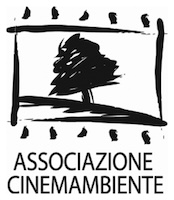Joris
Ivens
biography
If Jons Ivens’ films eschew formulas, stylistic dogma and temporal-contextual constraints, it is perhaps because he was so successfully able to understand the historical periods his work spanned – and the historical events that he himself lived firsthand – as well as hone in on the myriad artistic developments and influences of the twentieth century. To consider such a wide and heterogeneous body of work today means reflecting on a past that constantly becomes contemporary under mutated vestments each time one of his films is shown, which, given the preciseness of the film maker's subjectivity, become rare instruments for reflections on cinema and reality. We are confronted with mutable esthetics, severely sculpted by joyous and poetic authoritativeness or drastically determined by the dangerous and unpredictable conditions in which his films were made, behind which we recognize those same values, themes and ideas. Certainly, in 76 years of film making – from his first film at the age of thirteen, De Wigwam (1912) to his last, Histoire de Vent (1988) – Ivens maintained his coherency and personality as the historical and political events raged on. This can only be attributed to Iven's undying rigor and faith in man. His child-like fascination permanently intact, Ivens assimilated the avant-garde, militancy, the cine-poème, and many other experiences, while conserving precious thematic and stylistic cells which revisit each film and are manifest in a subjective vision of life. And that life was marked by the conviction – which lay somewhere between realism and utopia – that cinema was indeed an invaluable means to change the world. Beginning in the late 1920s we already see stylistic tendencies in Ivens. Films like De Brug (1928) and Regen (1929), sustained by a period of particularly happy linguistic experimenting, succeeded in bending the simple figurative essence of matter to come up with an absolute which documents a form while abandoning the object. Ivens’ first trip to the USSR brought new stimuli, meetings and exchanges. Profoundly influenced by Sergej M. Ejzenstejn and Dziga Vertov, Ivens’ first Russian experience led to the making of Komsomol (1932). Back in the Netherlands, his Philips Radio (1931), with its definitive focus on factory workers intent on their tasks, was the first Dutch film with sound. It was meant as a promo film, but actually comes off as a denouncement of worker exploitation. Then came the extraordinary images – secretly filmed with Henri Storck – of Misére au Borinage (1934), one of the most important militant documentaries of the first half of the twentieth century. In a world at war, Ivens would inevitably find himself on the front lines, beginning with Spanish Earth (1937), and moving on to China (The 400 Million, 1939), Cuba (Pueblo armado, 1961), and Vietnam (Le 17éme Parallèle, 1968). As unique as these films were with their direct testimony of events and the director's own active participation – Ivens could at the same time turn around and provide lyrical reflection on man's relationship with his environment (one of Ivens’ most pervasive themes), in works like La Seine a recontré Paris (1957), Before Spring (1958) and Pour le Mistral (1965). A cosmopolitan, a citizen of the world, Ivens succeeded in revealing the essence of a globalization that is the basis for common ground among struggles for survival and anti-imperialist movements across the planet. For him, cinema was direct action, awareness and counter-information. This no doubt also created a host of problems for Ivens such as the revoking of his passport by the Dutch government following the making of Indonesia Calling (1946); or the censorship of his Italian film commissioned by Enrico Mattei (L'italia non è un paese povero, 1960). Ivens’ great body of work remains compact, despite its variegated nature – capped off by Une Histoire de Vent (1988), one of the world's greatest “film-testaments” – and provides enormous insight into both historical and cinematic developments. He continues to engage us, to spark our awareness by showing how the invisible that he was able to film is still right there, before our very eyes.







